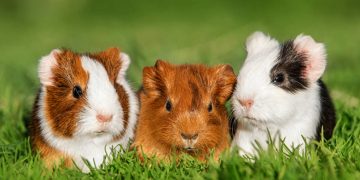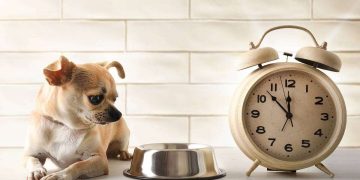Akitas, with their dignified presence and loyal nature, are a breed of dog that has captured the hearts of many dog enthusiasts. Known for their impressive stature and distinctive appearance, people often wonder, “How big can Akitas get?” In this article, we will explore the various factors that influence the size of Akitas, including genetics, gender, nutrition, and age. By understanding these factors, prospective and current Akita owners can gain insights into what to expect in terms of size and growth for these magnificent canine companions.
Akita: A Majestic and Noble Breed
Originating in Japan, Akitas are a powerful and majestic breed that was initially bred for guarding and hunting. They are characterized by their large size, noble demeanor, and thick double coat that comes in various colors, including white, brindle, and pinto. As with any dog breed, there is natural variation in size among individual Akitas.
Genetics and Size
Genetics play a significant role in determining the size of an Akita. When considering how big an Akita can get, it’s important to recognize that the breed standard sets forth general guidelines, but there can be variation within those guidelines due to genetic diversity.
Breed Standard Size
The American Kennel Club (AKC) provides breed standards for various dog breeds, including Akitas. According to the AKC breed standard, male Akitas typically stand between 26 to 28 inches (66 to 71 cm) at the shoulder and weigh around 100 to 130 pounds (45 to 59 kg). Female Akitas, on the other hand, tend to be slightly smaller, with a height of 24 to 26 inches (61 to 66 cm) and a weight of 70 to 100 pounds (32 to 45 kg).
Gender Differences
As mentioned earlier, there is a noticeable size difference between male and female Akitas. Male Akitas are generally larger and heavier than their female counterparts. This size difference is a result of sexual dimorphism, a natural phenomenon observed in many species, including dogs.
Nutrition and Growth
Proper nutrition is a crucial factor in determining how big an Akita can get. During the growth stages, puppies need a balanced and appropriate diet to support their development. A high-quality puppy food that is specifically formulated to meet the nutritional needs of large breeds is recommended.
Puppy Growth Phases
Akitas, like all dogs, go through distinct growth phases during their puppyhood. Understanding these phases can help anticipate how big they will become:
Neonatal Stage: This is the first two weeks of life when puppies are entirely dependent on their mother’s milk for nutrition and growth.
Socialization Stage: From 3 to 12 weeks, puppies begin to explore their surroundings and interact with their littermates. Proper socialization during this stage is crucial for their emotional development.
Rapid Growth Stage: Around 3 to 6 months, puppies experience rapid growth and may need more frequent and increased portions of high-quality puppy food.
Slowing Growth Stage: Between 6 to 12 months, growth slows down. This phase is vital for the proper development of bones and joints.
Adolescent Stage: From 6 to 18 months, puppies continue to grow, but at a slower rate compared to the rapid growth stage.
Factors Influencing Size
Several factors can influence how big an Akita can get:
Genetics: The genes inherited from the parents play a significant role in determining the eventual size of the Akita. Larger parents are likely to produce larger offspring.
Health: Akitas that are in good health and receive proper nutrition are more likely to reach their full potential size.
Breeding Practices: Reputable breeders adhere to breed standards and focus on producing healthy puppies. Responsible breeding practices contribute to the predictability of a puppy’s size.
Size as an Indicator of Health
It’s important to note that while size is a consideration, it should not be the sole indicator of a dog’s health or quality. Health, temperament, and overall well-being should take precedence over size in evaluating the value of an Akita.
Conclusion
Akitas are an enchanting breed known for their majestic appearance and unwavering loyalty. The size of an Akita can vary based on factors such as genetics, gender, nutrition, and growth stages. By understanding the breed standard guidelines, considering gender differences, and providing appropriate nutrition during growth stages, Akita owners can anticipate how big their furry companion will become. Remember that while size is an interesting aspect, the true worth of an Akita lies in their character, temperament, and the special bond they share with their human companions.























































